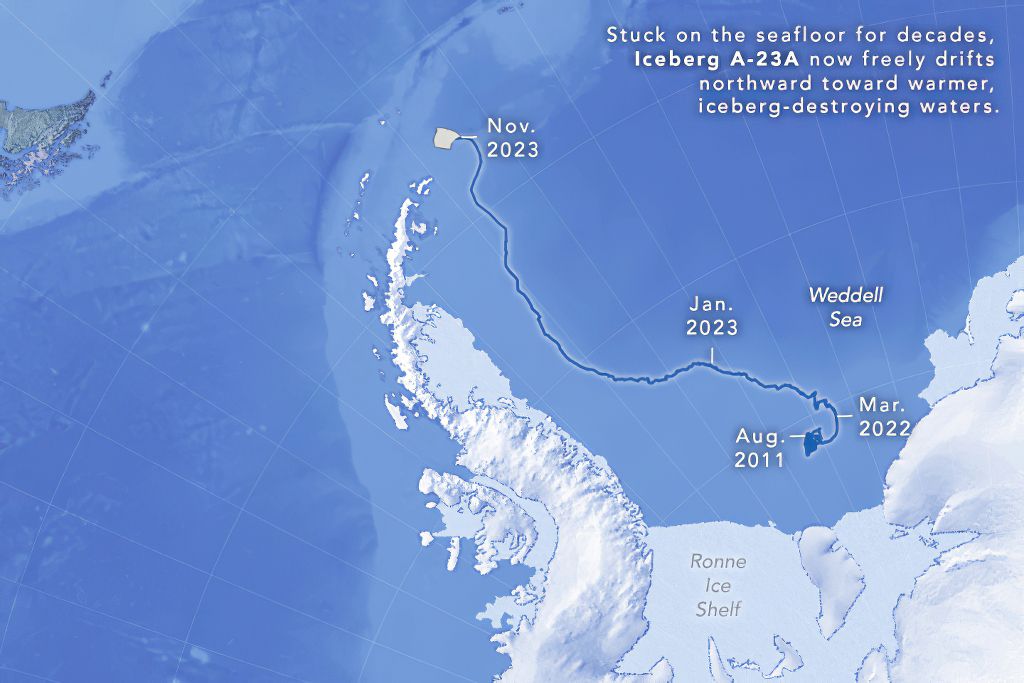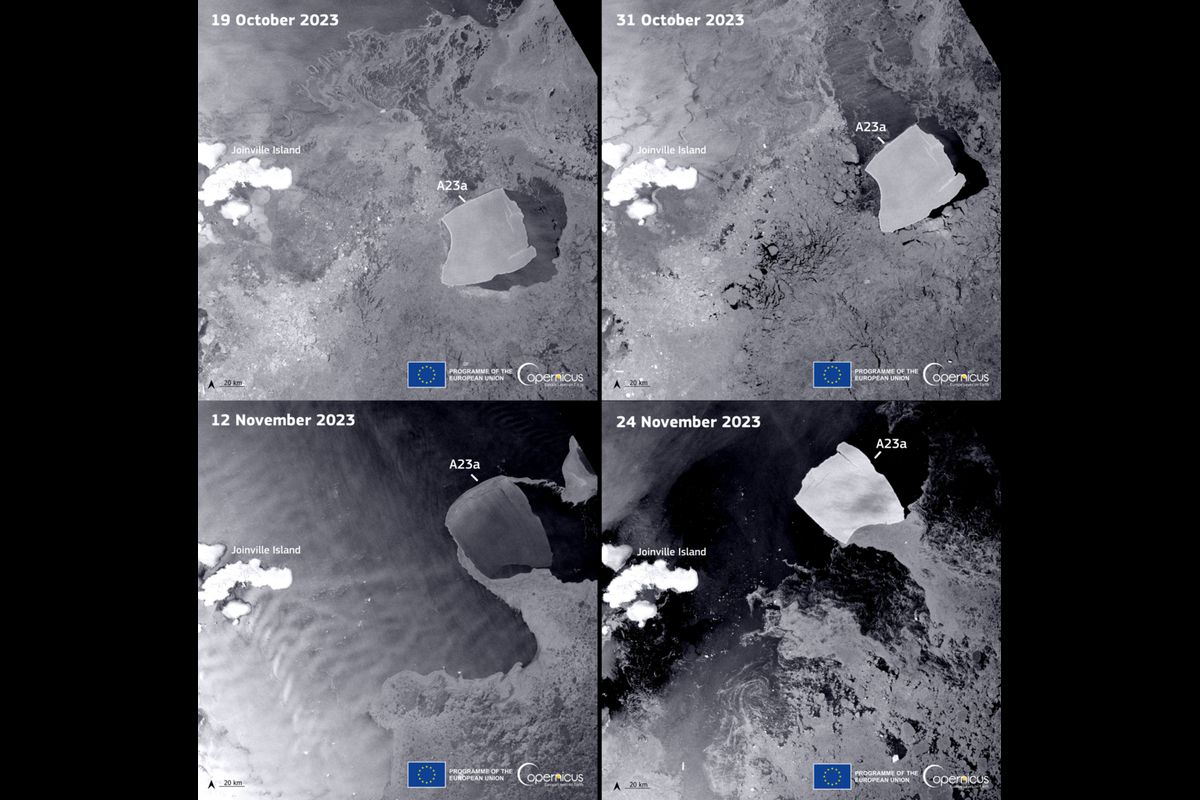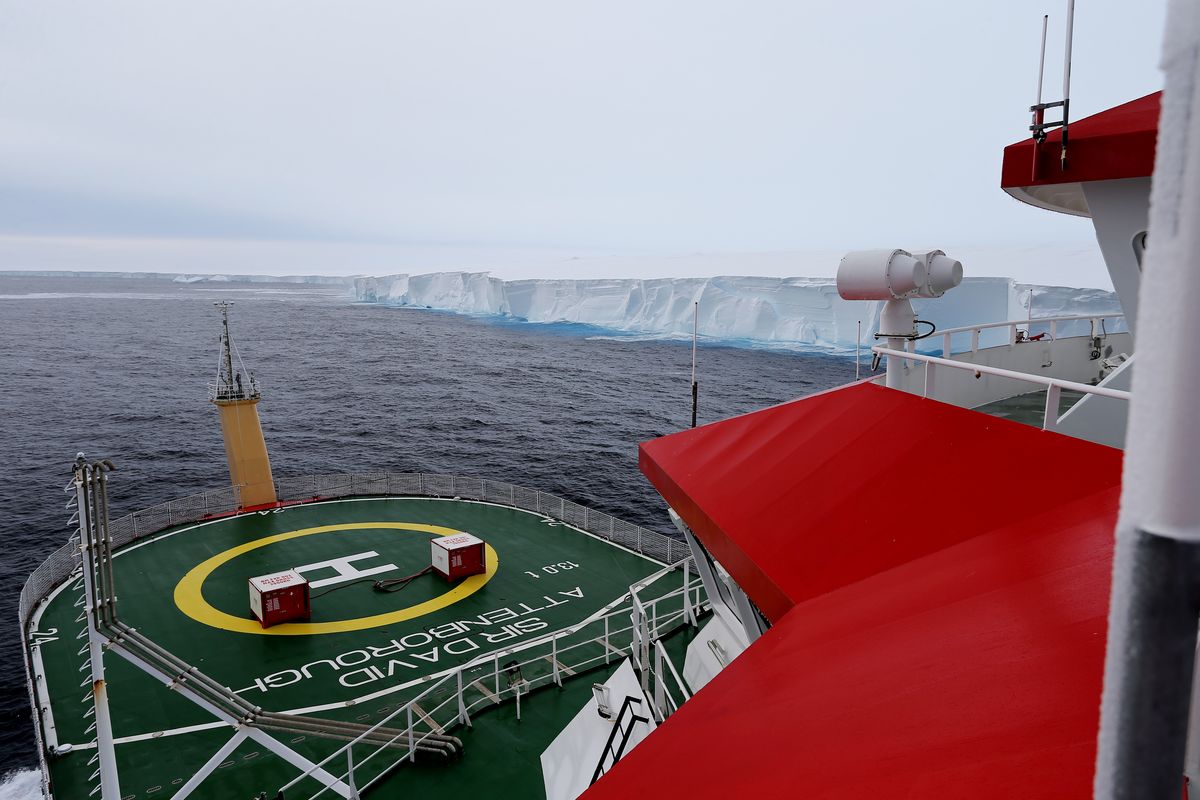The world’s largest iceberg, an icy island three times the size of New York City, has broken loose. The iceberg, called A23a, broke free from an Antarctic ice shelf in 1987, and has been grounded for over 30 years. Now it’s floating in the open ocean.
Antarctica, the world’s fifth largest continent, is covered with a thick layer of ice and snow. As snow falls, it piles up in the center of Antarctica in a layer of ice. Over time, the ice and snow become slowly moving rivers of ice called glaciers, which push out toward the sea.
Glaciers slowly push beyond the edge of the land, creating massive “ice shelves” floating on the water below. From time to time, the edges of these ice shelves break off. This is a natural process, called “calving”.

(Source: NASA’s Earth Observatory.)
In 1987, a massive iceberg, called A23, broke off from Antarctica’s Filchner Ice Shelf. The Soviet Union had a research station on the ice shelf, which was carried out to sea on A23. No one was in the station at the time.
A23 broke apart into three smaller pieces. One of those pieces was A23a.
Even though it’s smaller than A23, A23a is so massive that it’s hard to imagine. If you were standing on it, it would look like the whole world was made of ice. And though it’s moving, it’s so large that you wouldn’t be able to tell that it was moving.

(Source: EU, Copernicus Sentinel-1 imagery [Attribution], via Wikimedia Commons.)
Iceberg A23a is about 46 miles (74 kilometers) long, and 37 miles (59 kilometers) wide. That’s larger than the US state of Rhode Island. Scientists say the iceberg is probably about 1,200 feet (365 meters) thick. That’s just a little bit shorter than New York City’s Empire State Building.
That great height is what kept A23a grounded to the sea bottom for over 30 years. But A23a finally began to move again in 2020, scraping its way across the sea floor. In November, it moved past the northern edge of Antarctica, and has now floated into open water.
A23a may not stay in the open ocean. It could get stuck on the sea floor again. But scientists say it’s likely that A23a will keep moving north.

(Source: Rich Turner, British Antarctic Survey.)
As A23a gets farther from Antarctica, the weather will get warmer. The iceberg will leave behind a trail of cold, fresh water, changing the temperature and the saltiness of the water behind it. It will also leave behind a trail of minerals as it melts. All of these things will affect the plants and animals that live in the sea waters around it.
Scientists from the British Antarctic Survey (BAS) recently brought one of their research ships near A23a as it floated through the Weddell Sea. The scientists were able to take photos and videos of the iceberg, as well as take samples of the sea water around it.
Sooner or later, A23a will melt and break into smaller icebergs, which, in time, will also melt and break, until A23a is simply part of the sea once more.
Did You Know…?
Antarctica has been losing a lot of ice in recent years because of climate change, and this is a real concern. But A23a breaking free and floating away is a normal part of Antarctica’s ice cycle, and isn’t connected to the climate crisis.
